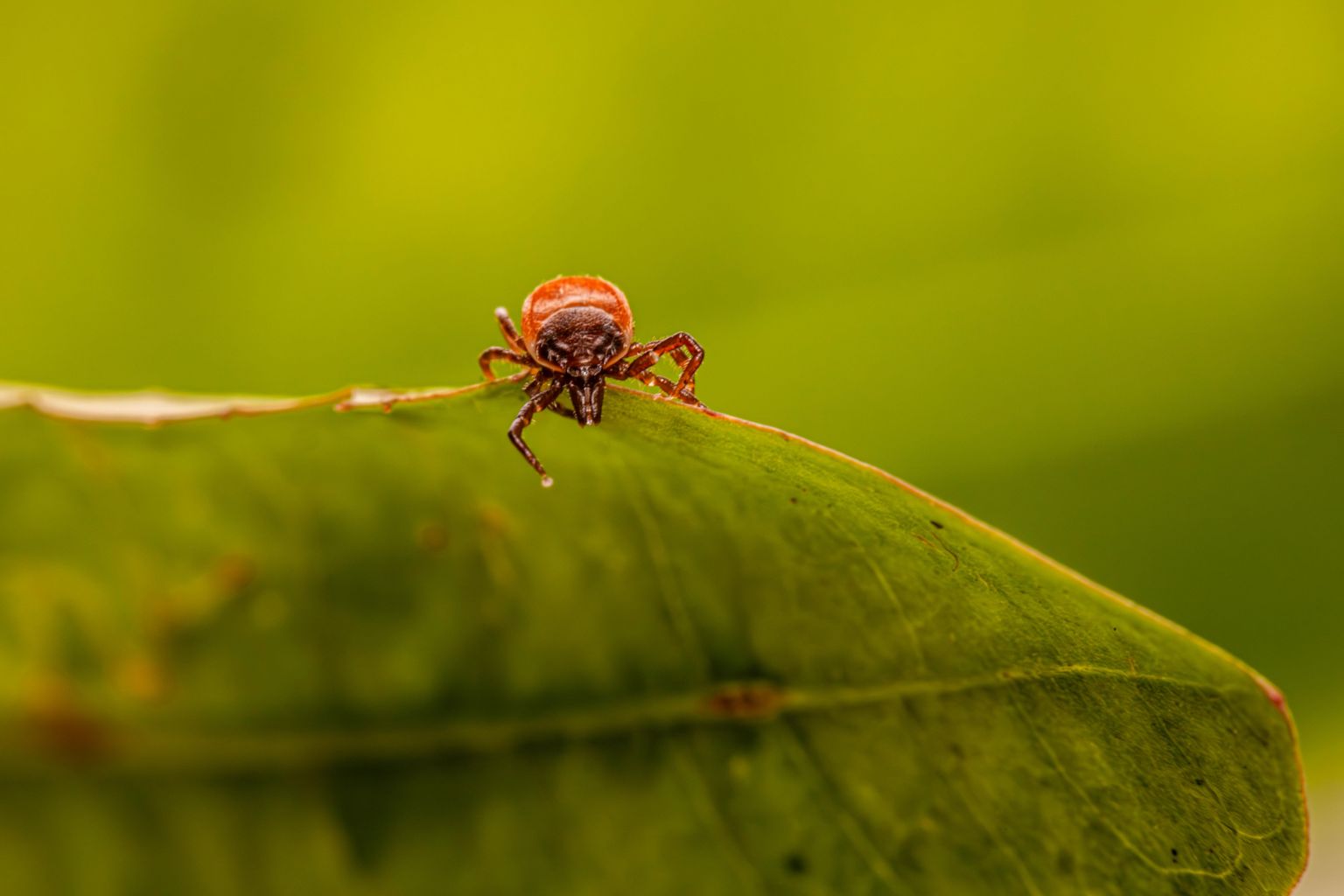Key Takeaways
- Bug bites on dogs can look alike, but different bugs cause different reactions.
- Early identification helps you prevent infections and serious illnesses.
- Common biters include fleas, ticks, mosquitoes, ants, flies, mites, bees, spiders, and gnats.
- Clean, soothe, and protect! That’s your basic care plan for bug bites.
- Routine prevention and vet checks help your dog stay bite-free year-round.
Why You Should Learn to Spot Bug Bites on Dogs Early
Dogs enjoy being outside, whether it's running in the park, rolling on the grass, or exploring every inch of your yard. However, all of that enjoyment may lead to problems, such as insect bites on dogs.
Some bites itch a little. Others may result in infections, edema, or even illnesses like heartworm or Lyme. So, it's crucial to identify the type of bug that bit your furry friend. Don’t worry! You can recognize, treat, and avoid dog bug bites like a pro pet parent by the end of this blog.
Common Bug Bites on Dogs (and What Each One Looks Like)
Different bugs leave different marks. Knowing how each bug bite on a dog looks helps you treat them faster and keep your pup comfortable. Here’s what to watch for.
- Fleas
You may usually spot flea bites on your dog as tiny red bumps clustered around the tail, belly, or hind legs. If your pal keeps scratching or biting at those areas, that’s your first clue.
Check for flea dirt. These are little black specks that look like pepper. Fleas spread fast, so wash bedding and vacuum regularly.
- Ticks
A tiny bump or scab is frequently left behind after a tick bite. There may occasionally be a red or bull's-eye mark surrounding it. Ticks can transmit diseases like Ehrlichiosis and Lyme disease. They can be hidden in grassy or forested areas. Examine your dog's paws, neck, and ears after playing outside.
Use tweezers to carefully remove any ticks you find. Then, use an antiseptic to clean the area. To get rid of ticks in the house, wash your pet’s bedding, vacuum carpets and corners regularly, and consider using pet-safe tick repellents.
- Mosquito
If you usually find the bites on your dog's belly or on other areas with thin fur, such as the nose and ears, they are most probably mosquito bites. They resemble elevated red spots. In addition to itching, mosquitoes can spread heartworms. Avoid taking evening strolls close to standing water and use insect repellents recommended by your veterinarian.
- Ants and Fire Ants
One of the most prominent types of insect bites on dogs is ant or fire ant bites. They typically manifest as painful, blistering clusters of red bumps. You may frequently notice these on your dog's paws or belly after spending time in the yard.
Because it stings, your dog may chew or lick the area. If your veterinarian recommends it, gently rinse with cool water and apply a calming cream.
- Flies
Fly bites may be the cause of scabs or tiny sores on the nose or ears of your four-legged companion. They are more prevalent in the summer and are frequently brought on by black or stable flies. Keep outdoor areas tidy and clear of trash or leftover food because these quickly draw flies.
- Mites
Despite their small size, mites are powerful troublemakers. In addition to biting, they burrow into the skin. They cause mange, which manifests as redness, bald spots, and constant itching. This bug bite on the dog unquestionably requires veterinary care for an accurate diagnosis and course of treatment because mites reside beneath the skin.
- Bees and Wasps
A carpenter bee sting can hurt your pet really badly. It can use sudden swelling, redness, and pain. Some dogs may develop hives or puffy faces after a bee or wasp sting. If your dog shows signs of an allergic reaction, such as trouble breathing or severe swelling, see a vet immediately.
- Spiders
Spider bites frequently leave two tiny puncture marks that are encircled by swelling or redness. While brown recluses and black widows can cause serious reactions, most spider bites are mild. Contact your veterinarian immediately if your friend appears weak, has a fever, or behaves strangely after being bitten.
- Midges and Gnats
Little, itchy red pimples are left behind by gnats, particularly near your dog's eyes, ears, and abdomen. They congregate near water or moist areas because they adore moisture.
Use pet-safe repellents and maintain a dry, well-ventilated yard to keep them away.
How to Tell Which Bug Bit Your Dog
Not sure what’s bugging your pup? Different insects leave different bite marks, and knowing what to look for can help you identify the culprit faster. Here’s a quick guide to spot common bug bites in dogs, what they look like, where they usually appear, and how you can tell them apart.
| Bug Type | Bite Appearance / Pattern | Common Bite Locations on a Dog | Identification Tips |
|---|---|---|---|
| Fleas | Tiny red bumps often seen in clusters | Around the tail, belly, or hind legs | Check for flea dirt (tiny black pepper-like specks). Fleas spread fast, so wash bedding and vacuum often. |
| Ticks | Small bump or scab, sometimes a red or bull’s-eye mark | Ears, neck, between toes, and paws | Feel for small lumps after outdoor walks. Remove ticks carefully with tweezers and clean the area with an antiseptic. |
| Mosquitoes | Raised red spots on thin-skinned areas | Belly, nose, ears | Common near standing water. Use vet-approved repellents and avoid evening walks near water. |
| Ants / Fire Ants | Painful red welts or blistering bumps | Paws, belly, or areas that touch the ground | Your dog may lick or chew the spot. Rinse with cool water and apply soothing cream if your vet recommends it. |
| Flies | Tiny sores or scabs | Nose, ears | Often caused by black or stable flies in summer. Keep outdoor areas clean and trash-free. |
| Mites | Redness, bald spots, intense itching | All over the body, especially the ears and legs | Mites burrow under the skin and cause mange. Needs prompt vet care for diagnosis and treatment. |
| Bees / Wasps | Sudden swelling, redness, or pain | Face, paws, or mouth area | Watch for allergic reactions (puffy face, difficulty breathing). Seek vet care immediately if symptoms appear. |
| Spiders | Two small puncture marks surrounded by redness or swelling | Legs, belly, or face | Most are mild, but brown recluse or black widow bites can cause serious symptoms. Contact your vet if your dog seems weak or feverish. |
| Midges / Gnats | Small, itchy red pimples | Around the eyes, ears, and abdomen | Thrive in moist areas. Use pet-safe repellents and keep your yard dry and well-ventilated. |
How to Handle a Bitten Dog
Have you seen your dog get bitten by a bug? Remain composed and take these easy actions, step-by-step:
- Examine and wash the bite with water and mild soap.
- To reduce swelling and redness, apply a cold compress.
- Prevent your dog from licking or scratching the area.
- Apply an antihistamine or anti-itch spray that has been approved by your veterinarian (if prescribed).
- In the event of swelling, infection, or an allergic reaction, get in touch with your veterinarian for treatment for dog insect bites.
How to Keep Dogs Safe From Bug Bites
Follow these easy tips to make sure your doggy stays bite-free and comfortable all year round.
- Use flea and tick repellents all year long.
- Make sure your dog is groomed and clean.
- Mow your lawn and remove any soggy or grassy areas.
- Apply pet-safe repellents before enjoying the outdoors.
- Vacuum and wash bedding frequently.
- Steer clear of areas with standing water.
- Contact a professional pest control company immediately if you think there may be insect nests near your house.
When to Contact the Veterinarian to Treat Bug Bites on Dogs
You may need to consult your veterinarian if you observe:
- Prolonged pus, swelling, or itching.
- Several bites or infection-related symptoms.
- Breathing difficulties following a wasp or bee sting.
- Fever or limping following a tick bite.
- Any bite that rapidly spreads or gets worse.
Although a bug or insect bite on a dog may not seem like much, it can cause your furbaby a lot of discomfort. The good news? With a little care, you can identify and prevent the majority of bites and their painful effects early on.
Check their skin frequently, take preventative measures, and pay attention to any small red bumps. Your pet will thank you with tail wags and peace of mind!


















